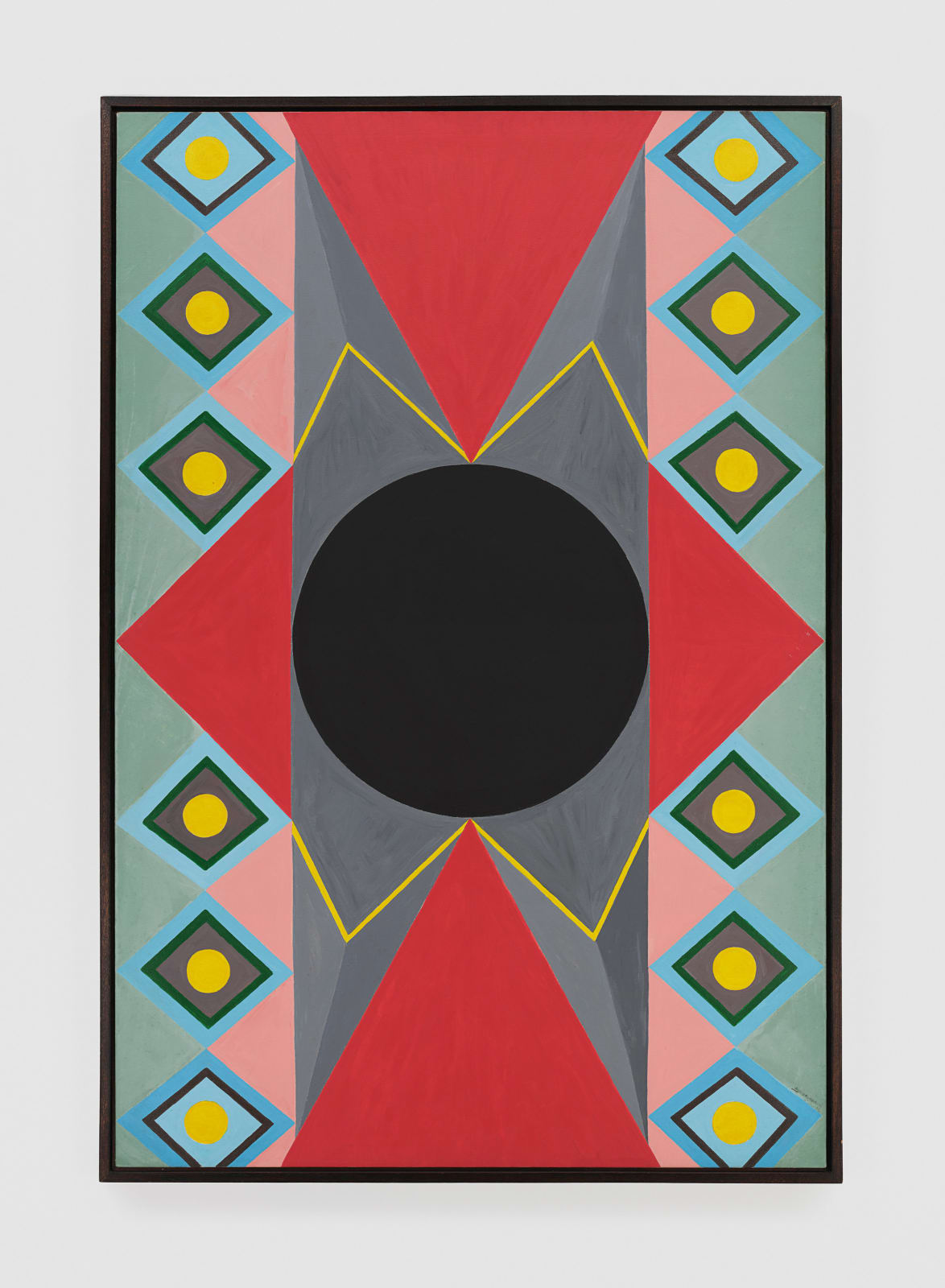Abdias do Nascimento
acrílica sobre tela
59 x 39 3/8 in
He employed painting as both a vehicle to address his migratory experience and a tool to continue his anti-racism activism. Engaging with art from the 1930s Harlem Renaissance and the 1960s Black Power movement, Nascimento produced images representing transnational Black solidarity within a cultural space that operated beyond national confines. Ultimately, Nascimento’s work unsettles dominant modes of Brazilian and United States representation at the time, employing elements to question the art world’s exclusion of the Black experience.
While Nascimento created his first works before leaving Rio in mid-1960s, his practice developed while he lived in New York, until 1970. He later explained that painting helped him connect with activist circles in New York because of his limitations with English: “Blocked by the English language, I found that I had inside me a different form of communication: I could paint.” In the United States, Nascimento witnessed the prominence of African American art and its political potential, inspiring him to enact his activism through a visual medium. During this foundational period, Nascimento developed a visual language that not only confronted anti-Black racism in Brazil and abroad but also heightened his own consciousness, as an artist in exile working among an international group of African-descendant artists and activists. The impact of migration and forced exile motivated, in part, Nascimento’s depiction of diasporic movement and resistance.
In Ideograma Adinkra, we have a playful palette adorned with symbols, with a black-hole shaped figure on the center, as it draws attention to it. Adinkra are a set of symbols called ideograms to make up an ideographic writing system. The word Adinkra, in the Twi language of the Ashanti people, has a meaning of both greeting and farewell. The suffix Kra means soul, so Adinkra means “farewell to the soul." Each image represents a concept, an idea, and contains a proverb. These symbols, in tradition, are used in funeral ceremonies in honor of recently departed ancestors, especially when it comes to a sovereign, a king, with great festivities to mark the passing. These symbols often also represent the sovereignty of a nation, of a kingdom.
